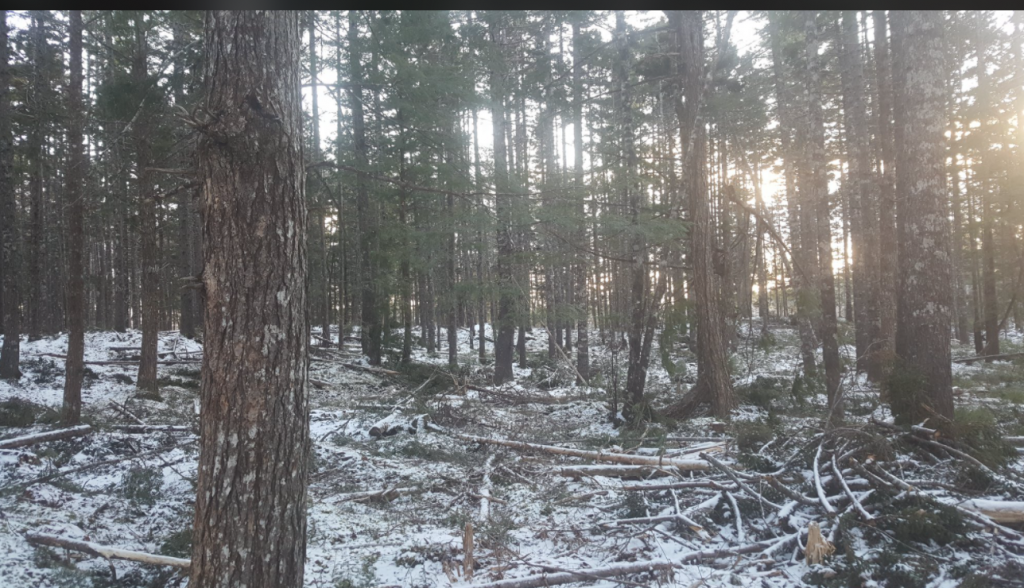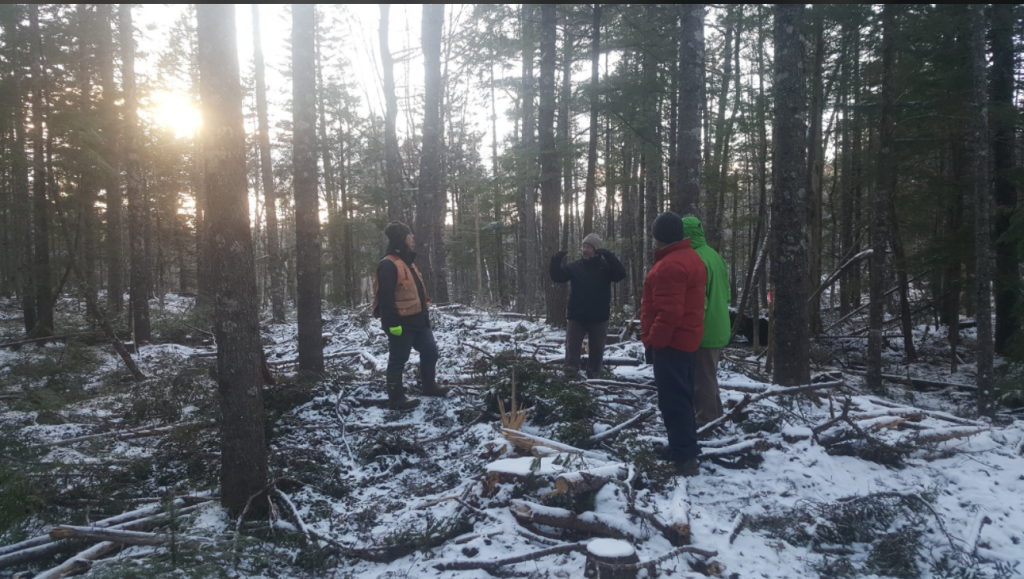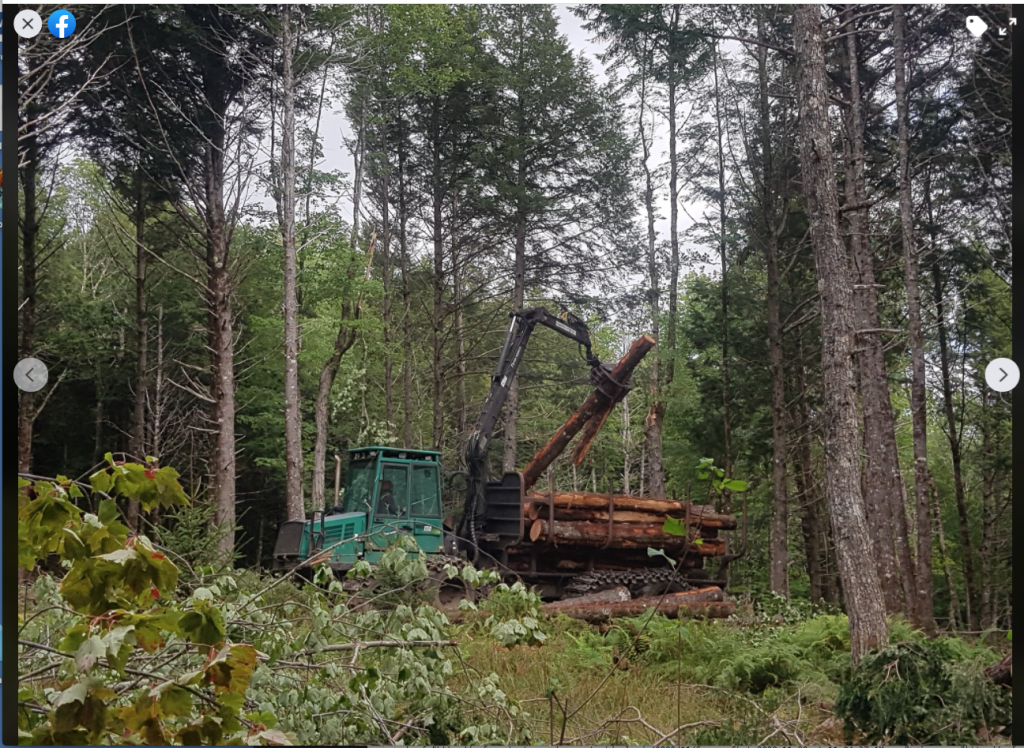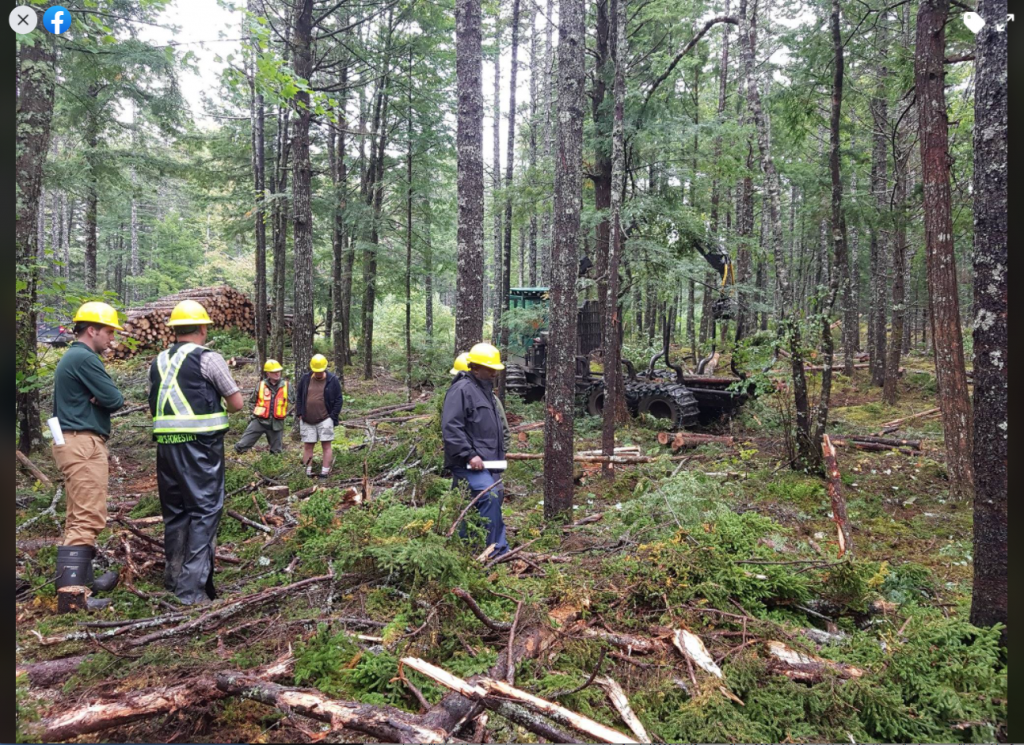Posted on Healthy Forest Coalition Facebook Page, Jan 24, 2019
Members of the HFC are working with other organizations to find solutions for sustainable forest industry and ecology.
Written by Paul Pross:
“On December 10 a small group of HFC members (Helga Guderley, John Himmelmann, Mike Lancaster, Catherine Pross and Paul Pross) joined the Nova Scotia Woodlot Owners and Operators Association’s (NSWOOA) President Lorne Burrows and Executive Director Andy Kekacs on a tour of a woodlot owned by J.A. Turner and Sons Ltd. of West Northfield. The tour had been organized by Andy Kekacs and was conducted by Patricia Amero (Forester and General Manager of Western Woodlot Services Coop), who is managing or overseeing the partial harvest job, and Kevin Eisnor whose contracting business, Eisnor Forestry Ltd. , is carrying out the harvest work. Purpose of the visit was to see a selection management operation. We hoped to satisfy ourselves that selection management along the lines discussed in the Lahey Report could be carried out using full-scale harvesters and could return a profit to all involved.
The woodlot comprises 84 acre and is predominantly spruce, pine, and hemlock. The worked area is about 55 acres, and there is about 20 acres of wetland. Turners have owned it for a number of years. They use it as a back-up to their usual supply and manage it with the object of improving growing conditions and to increase the quality and value of forest products, as well as to obtain a periodic supply. Cutting has taken place at ten-year intervals, yielding small harvests. The current cut will yield about 1,400 tonnes, the first time a harvest has come close to the ten-year cumulative annual allowable cut (AAC) of 160 tonnes per year. Output is hemlock and spruce sawlogs, pulpwood and biomass (firewood and roundwood for chips). Turner’s mill saws the sawlogs and the company sells the lumber directly either retail at their mill or to eastern Canada markets. They sell the firewood to Eisnor, who either sells it retail or for biomass, if the latter cannot be sold for domestic or campfire uses. Pulpwood is usually sold to N.P. and sometimes to PHP.
Kevin Eisnor explained that he has done clearcuts but prefers selection cutting which he sees as a win-win approach. His main operators like the challenges of such work. It retains, and can improve, the forest. Furthermore, they know they will probably go back every 10 years. Thus they have continued work, whereas if the site were clearcut, they wouldn’t go back in their lifetimes. For the woodland owner there is a periodic income, rather than large gains once in a lifetime. The contractor can establish an on-going relationship with the woodlot owner.
Eisnor’s have 15 employees. Their operators take care to avoid damaging surrounding growth and limit ground disturbance. On the site we visited we could see little evidence that a cut had recently taken place. It retained canopy and there was little to no ground disturbance or rutting on extraction trails in the woods. At the same time, the operation provides an acceptable income to the owners (approx. 54%), the contractor (41%) and the manager (5%) of the total roadside value of wood harvested. Eisnor’s use a 1270 John Deere harvest processor and 8-wheel drive 11 tonne John Deere forewarder. These are wheeled machines; Kevin believes tracks machines may not always be appropriate for partial harvest operations. The harvester employs advanced technology such as diameter gauges that, for example, enable the operator to determine whether stems should be cut for studs or pulpwood, a decision that can materially affect the profitability of a harvest.
The group’s consensus, as we left the woodlot, was that it was certainly being managed in an ecologically sensitive manner that was consistent with the Lahey recommendations. Furthermore its management was economically viable even with the use of modern machinery.”
Photo 1 and 2 are from the site visit. Photo 3 and 4 are from when the work was being completed.
Photos by Mike Lancaster




